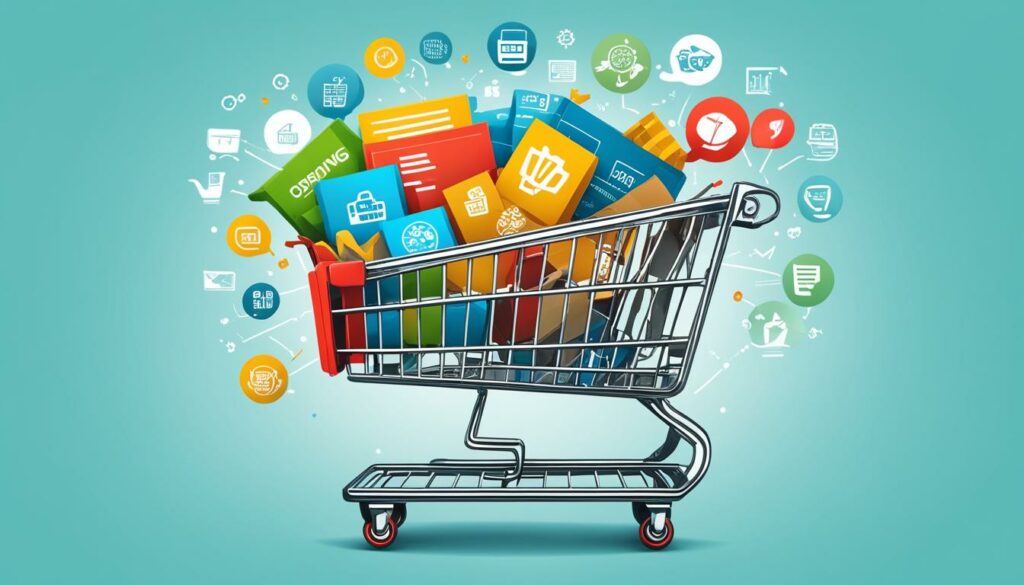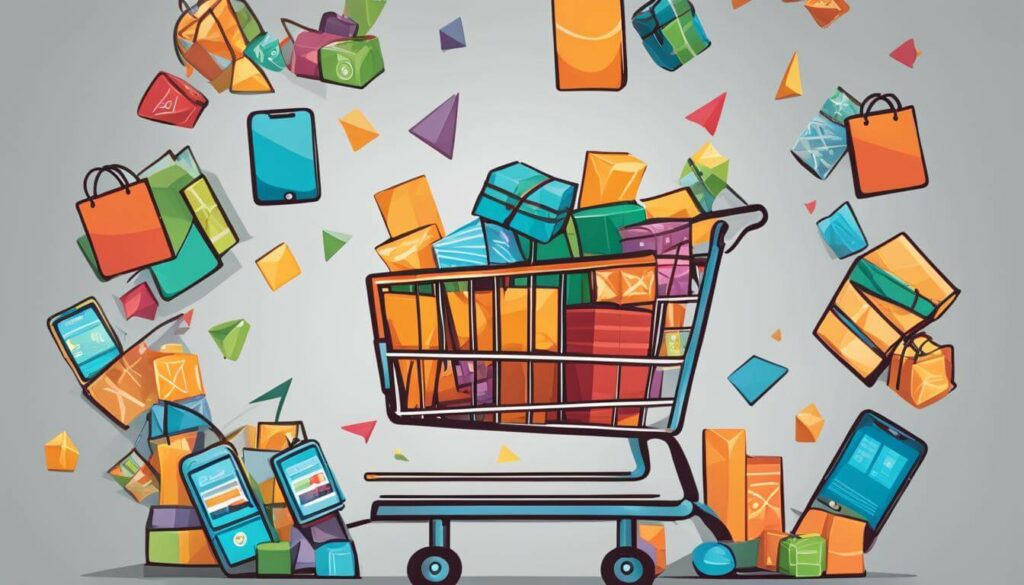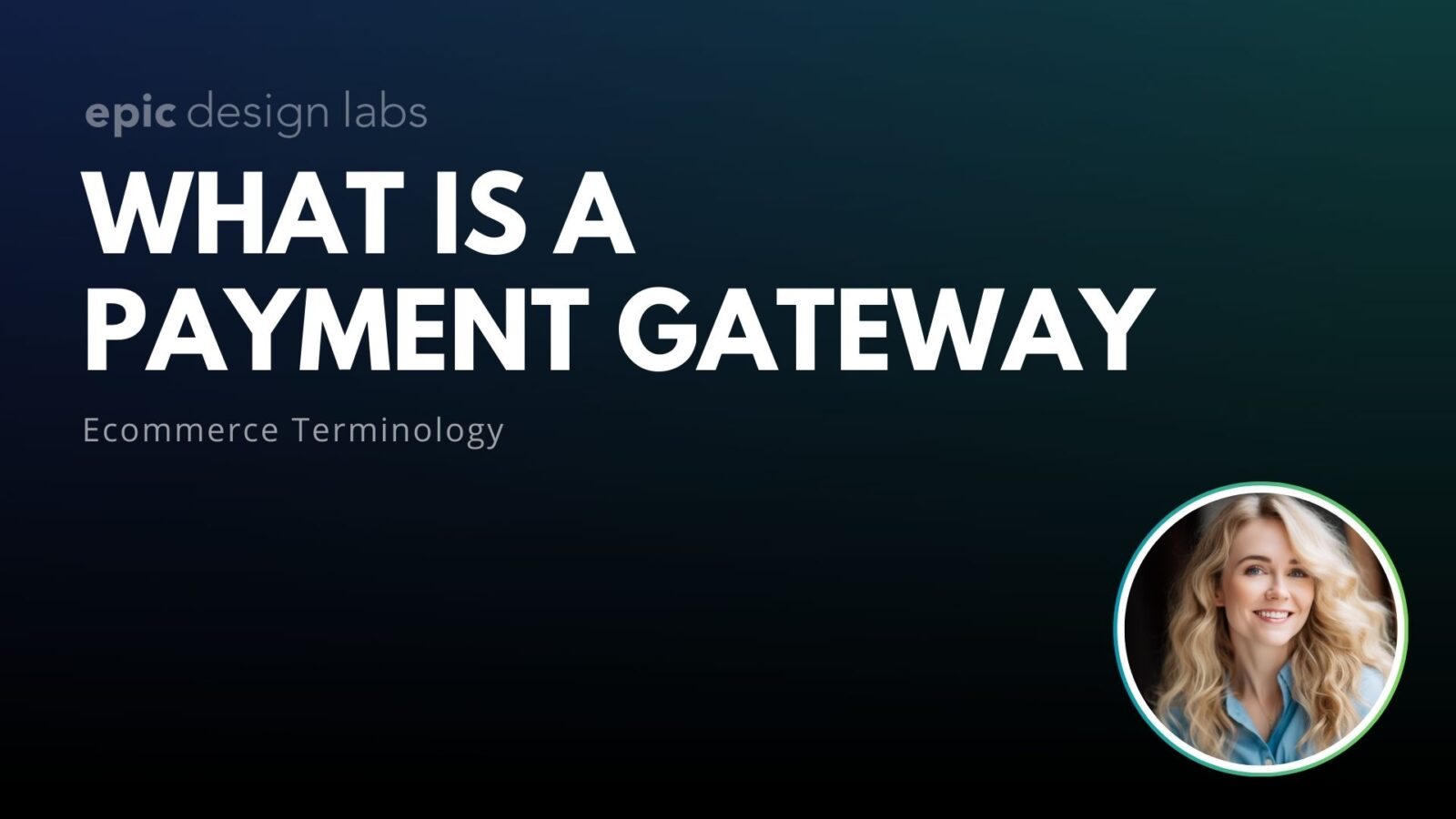In the contemporary age, the concept of commerce has undergone a significant metamorphosis, shifting from the traditional brick-and-mortar storefronts to intangible, digital marketplaces. This evolution has birthed what we now know as Ecommerce. Essentially, Ecommerce – or electronic commerce – denotes the buying and selling of goods or services using the internet as a conduit.
It encompasses various facets including online shopping, internet banking, electronic payments, and online auctions among others. The ubiquity of digital technology coupled with its convenience has propelled Ecommerce to loftier heights.
Today, it is not just an alternative but a vital part of business strategy for many entities worldwide. It’s no longer confined to business giants, but includes small and medium-sized businesses all aiming to tap into this bustling global market.
AOV (Average Order Value)
Average Order Value (AOV) in ecommerce is a metric that measures the average dollar amount spent per order placed on a website or mobile app. It is calculated by dividing the total revenue by the number of orders. AOV is an important key performance indicator for online stores, as it helps in understanding customer behavior, setting goals, and evaluating the effectiveness of strategies.
Growing sales and increasing revenue are top priorities for any ecommerce business. To achieve this, it’s essential to focus on metrics that can help optimize conversion rates and maximize profitability. One such metric is Average Order Value (AOV), which in ecommerce terminology means the measure of the average amount spent by customers per transaction. AOV provides valuable insights into consumer behavior and can be a game-changer for your online business.
AOV is calculated by dividing the total revenue by the number of orders. This metric takes into account the average cart size and can highlight opportunities for upselling, cross-selling, and other revenue-boosting strategies. By increasing AOV, you can effectively drive sales growth and improve your bottom line.
Implementing conversion rate optimization tactics and leveraging ecommerce analytics can help you identify ways to increase AOV. By analyzing consumer behavior, you can develop strategies to encourage customers to add more items to their carts or upgrade to higher-priced options.
Upselling and cross-selling techniques are effective methods for increasing AOV. By suggesting related or upgraded products to customers during the checkout process, you can encourage them to make additional purchases or opt for higher-value items. For example, if a customer is buying a smartphone, you can suggest adding a protective case or premium headphones to their order.
Bundling can be another effective strategy to increase AOV. By offering discounted prices for purchasing multiple products as a bundle, you can encourage customers to spend more in order to take advantage of the deal. This not only increases AOV but also enhances customer satisfaction and loyalty.
Another way to boost AOV is by offering volume discounts. By incentivizing customers to buy in larger quantities, you can increase their order value. For example, you can offer a “Buy 2, Get 1 Free” promotion or a tiered discount structure that rewards customers for purchasing more items.
Implementing customer loyalty programs can also drive AOV. By providing exclusive discounts, rewards, or free shipping for repeat customers, you can incentivize them to make larger purchases and become loyal advocates for your brand.
In conclusion, AOV is a critical metric in ecommerce that provides insights into customer behavior and opportunities for revenue growth. By focusing on strategies to increase cart size through upselling, cross-selling, bundling, and loyalty programs, you can drive AOV and achieve sales success in the competitive online marketplace.
Key Takeaways:
- AOV is the average amount spent by customers per transaction in ecommerce.
- Increasing AOV can drive sales growth and improve profitability.
- Upselling, cross-selling, bundling, and volume discounts are effective strategies to increase AOV.
- Implementing customer loyalty programs can incentivize larger purchases and repeat business.
- Tracking AOV alongside other important metrics is essential for optimizing ecommerce performance.
Average Order Value (AOV) and its Importance in Ecommerce
When it comes to evaluating the success of an ecommerce business, one metric stands out: Average Order Value (AOV). AOV refers to the average amount of money a customer spends per transaction and plays a crucial role in shaping the revenue and profitability of online stores.
To calculate AOV, simply divide the total revenue generated by the number of orders received. This metric provides valuable insights into customer behavior and their purchasing patterns. By tracking AOV over time, businesses can gain a deeper understanding of their target audience and make data-driven decisions to drive growth and optimize their pricing strategy.
A higher AOV indicates that customers are spending more money on average during each transaction. This not only leads to increased revenue but also signifies a higher level of engagement and satisfaction from customers. By focusing on increasing AOV, businesses can maximize their revenue potential without solely relying on increasing the number of transactions.
The importance of AOV extends beyond revenue. It also serves as a key performance indicator for ecommerce businesses. By setting goals to improve AOV, businesses can align their marketing efforts, optimize product offerings, and implement strategies aimed at increasing cart size and customer spend.
“Increasing Average Order Value has a direct impact on a company’s bottom line. By understanding and optimizing this metric, businesses can achieve sustainable growth and success in the competitive landscape of online shopping.”
Understanding customer behavior is crucial in building effective strategies to increase AOV. By analyzing shopping patterns, businesses can identify opportunities for upselling and cross-selling, offering bundled products, providing volume discounts, or implementing customer loyalty programs. These strategies not only encourage customers to spend more but also enhance their overall shopping experience, fostering loyalty and repeat business.

As ecommerce continues to evolve, metrics like AOV prove invaluable in shaping business strategies, optimizing conversion rates, and driving revenue growth. By leveraging the insights gained from AOV, ecommerce businesses can take informed actions to create a customer-centric shopping experience, maximize their profits, and stay ahead of the competition.
Factors Influencing Average Order Value in Ecommerce
When it comes to ecommerce, there are several factors that can influence the average order value (AOV). By understanding these factors, businesses can strategically implement measures to increase AOV and maximize revenue.
1. Upselling and Cross-selling
One effective way to increase AOV is by utilizing upselling and cross-selling techniques. By suggesting additional products or encouraging customers to opt for more expensive alternatives, businesses can encourage customers to spend more, thus increasing the order value.
2. Bundling
Another strategy to boost AOV is through bundling complementary products together at a discounted price. This not only provides value to customers but also encourages them to explore and purchase multiple items, resulting in a higher AOV.
3. Free Shipping and Volume Discounts
Offering free shipping with a minimum order value or providing volume discounts for customers who buy multiple items are effective ways to incentivize customers to spend more. These tactics not only increase the perceived value of the purchase but also help increase AOV.
4. Implementing a Customer Loyalty Program
A customer loyalty program can be a powerful tool in driving AOV. By rewarding repeat purchases and providing exclusive benefits, businesses can encourage customers to continue shopping and spending more, ultimately increasing the AOV.
By leveraging these factors, businesses can optimize their AOV and drive revenue growth in the highly competitive world of ecommerce.

Strategies to Improve Average Order Value in Ecommerce
When it comes to ecommerce, businesses are always seeking ways to boost their average order value (AOV). By implementing effective strategies, you can encourage customers to spend more, ultimately increasing your revenue. Here are some proven tactics to optimize your AOV:
- Upselling and Cross-selling: Suggest related or upgraded products to customers, enticing them to add more items to their cart or upgrade to higher-priced options. For example, if a customer is purchasing a camera, offer them camera accessories or a premium lens.
- Bundling: Group complementary products together and offer them at a discounted price. This strategy encourages customers to purchase multiple items, increasing the overall order value. For instance, if you sell skincare products, bundle a cleanser, toner, and moisturizer as a set.
- Free Shipping: Offer free shipping on orders that meet a minimum value. Customers are more likely to add items to their cart to qualify for free shipping, thereby boosting the AOV. Make sure to clearly communicate the minimum order value required for free shipping.
- Volume Discounts: Encourage customers to buy in bulk by offering volume discounts. Display the discounted prices prominently, highlighting the savings they can obtain by purchasing larger quantities.
- Customer Loyalty Programs: Implement a loyalty program to reward repeat purchases. Offer exclusive discounts, early access to new products, or special perks to incentivize customers to continue shopping with you, increasing their AOV over time.
- Effective Merchandising: Showcase your products in a visually appealing and strategic manner. Use high-quality images, enticing product descriptions, and customer reviews to create an engaging shopping experience that motivates customers to make larger purchases.
By combining these strategies and tailoring them to your specific ecommerce business, you can optimize your AOV and drive revenue growth. Experiment with different approaches, analyze the results, and continuously refine your tactics to achieve the best possible outcomes.

Implementing Upselling and Cross-selling
“Would you like to upgrade to the deluxe version of our product? It has additional features that can greatly enhance your experience.”
Upselling and cross-selling are both effective techniques to increase the average order value. When employing upselling, you offer customers a more advanced or premium version of the product they are considering. By highlighting the benefits and value of the upgraded option, you can convince them to spend more.
Cross-selling, on the other hand, involves suggesting related products or accessories that complement the customer’s purchase. For example, if a customer is buying a smartphone, you can recommend a protective case or a wireless charger. By showcasing the additional value that these products can bring, you can encourage customers to add them to their order.
Table: Example of Upselling and Cross-selling Opportunities
ProductUpsellCross-sellSmartwatchOffer a premium model with advanced tracking featuresRecommend additional wristbands or screen protectorsCameraUpgrade to a higher resolution or professional-grade cameraSuggest camera lenses, tripods, or camera bagsRunning ShoesPropose a more advanced model with extra cushioningOffer moisture-wicking socks or sports armbands
By presenting upselling and cross-selling opportunities in a strategic and helpful manner, you can increase the likelihood of customers adding more products to their cart, thereby raising your AOV.

Implementing these strategies and continuously optimizing them can have a significant impact on your average order value. By encouraging customers to spend more and enhancing their shopping experience, you can drive revenue growth and maximize the potential of your ecommerce business.
Conclusion
Average order value (AOV) is a critical metric in ecommerce that significantly impacts sales and revenue growth. By analyzing and monitoring AOV, businesses can gain valuable insights into customer behavior and implement effective strategies to increase AOV and drive business growth.
Various factors contribute to improving AOV, such as upselling and cross-selling techniques, bundling products together, and offering enticing incentives like free shipping or volume discounts. These strategies encourage customers to spend more and increase the average amount per transaction.
By focusing on optimizing AOV and implementing these proven strategies, ecommerce businesses can enhance cart size and customer spend, ultimately resulting in higher conversion rates and increased revenue. In the competitive online shopping landscape, prioritizing AOV is essential to achieving success and staying ahead of the competition.
Source Links
- https://www.optimizely.com/optimization-glossary/average-order-value/
- https://vwo.com/blog/important-ecommerce-metrics/
- https://www.shopify.com/blog/average-order-value
FAQs
What is AOV in Ecommerce?
AOV, or average order value, is a crucial metric in ecommerce that measures the average amount spent by customers per transaction.
How is AOV calculated?
AOV is calculated by dividing total revenue by the number of orders.
Why is AOV important in Ecommerce?
AOV is important in ecommerce as it helps businesses evaluate their marketing efforts and pricing strategy, leading to increased revenue and profitability.
What factors can influence the average order value in ecommerce?
Factors such as upselling, cross-selling, bundling, offering free shipping, volume discounts, and implementing customer loyalty programs can influence AOV in ecommerce.
What strategies can businesses employ to improve average order value in ecommerce?
Businesses can employ strategies such as upselling, cross-selling, bundling, offering free shipping, volume discounts, and implementing customer loyalty programs to improve AOV in ecommerce.
How can merchandising methods contribute to improving AOV in ecommerce?
Effective merchandising methods can showcase products in a way that motivates customers to make larger purchases, thus contributing to improving AOV in ecommerce.


